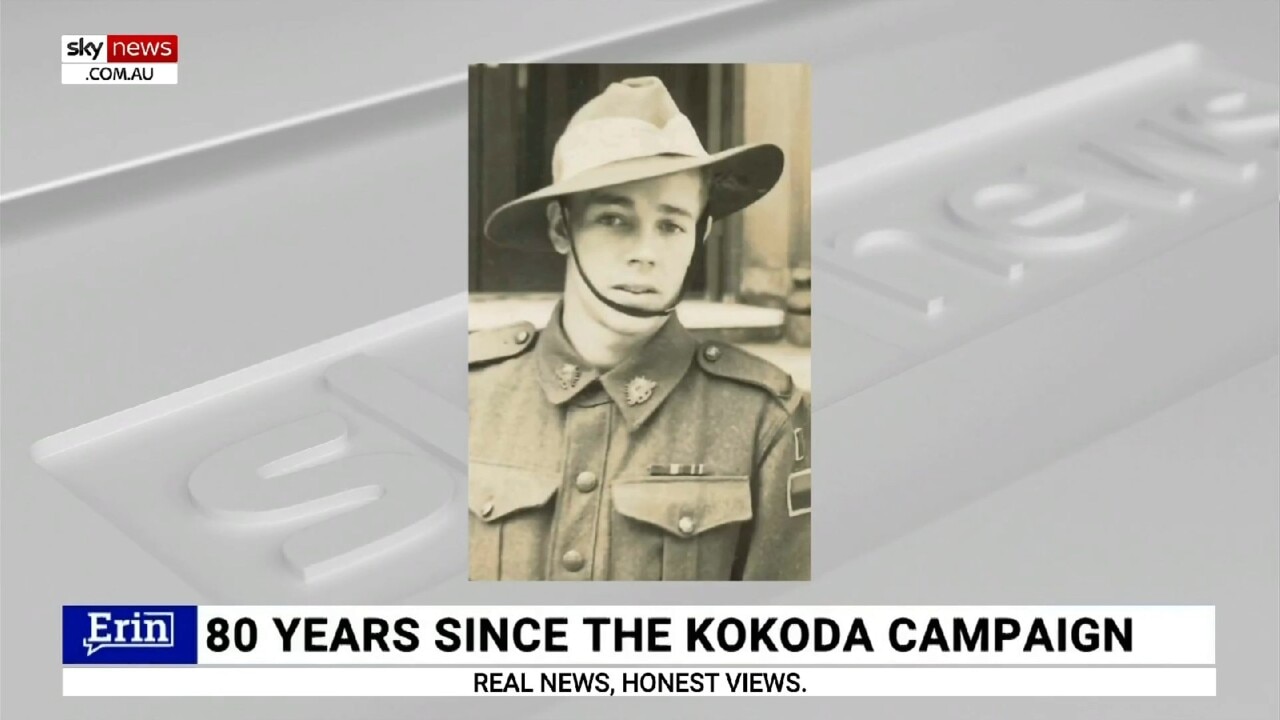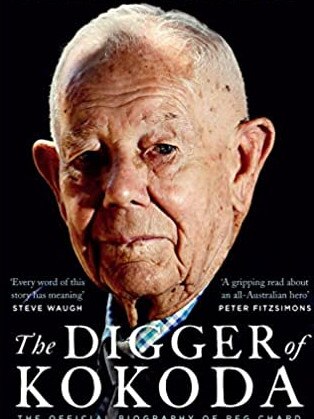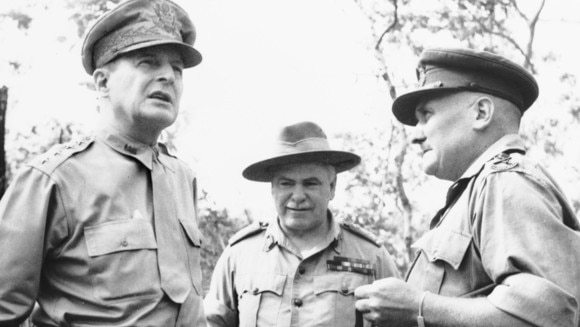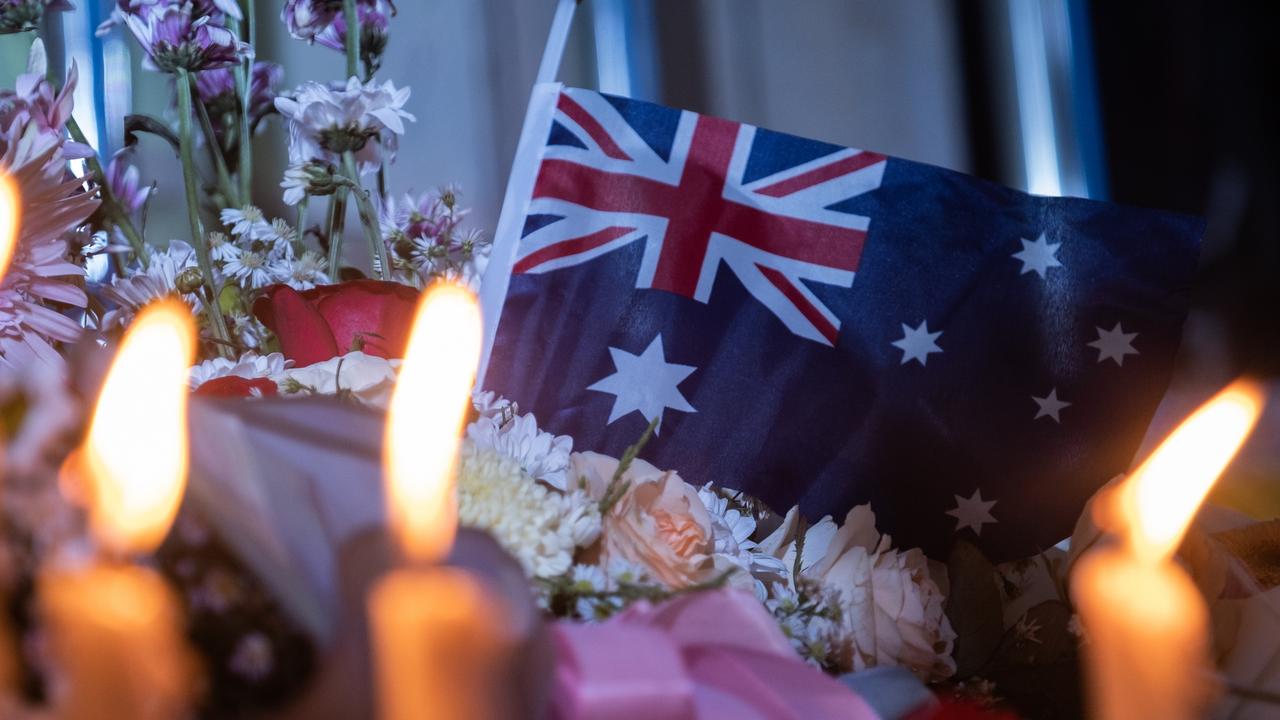Massacre controversy overshadows Kokoda Track biography
A horrifying account of a violent massacre and revenge killing carried out by Australian soldiers in WWII has ignited debate among eminent historians.

A horrifying account of a violent massacre alleged to have occurred in the darkest days of Japan’s assault on PNG during WWII has ignited debate among the nation’s most eminent historians after it was featured in a book despite the publisher being warned about the concerns.
The book, published by Pan Macmillan and written by former journalist Daniel Lane, titled The Digger of Kokoda: The Official Biography of Reg Chard, details the mass slaughter of about 25 white women and a brutal revenge killing carried out by Australian soldiers in 1942.
The biography, published last month, has been endorsed by author Peter FitzSimons, whose praise is splashed across the front cover, Australian War Memorial head of military history Karl James and former governor-general Peter Cosgrove.
But a group of respected Australian historians has disputed a string of claims made in the book, particularly how such an “appalling war crime” could have gone unreported for 80 years.

They also criticised the author for multiple historical errors and accused Pan Macmillan of failing to verify the recollections of a 98-year-old war veteran who was not at fault.
Historian David W. Cameron, who has written multiple books on the Kokoda campaign, was so concerned about the contents of the book that he wrote to Pan Macmillan before it was published.
However, the warning and Dr Cameron’s offer to fact-check the book before publication fell on deaf ears, correspondence obtained by The Weekend Australian reveals. “As stated, I am happy in any way to assist in sparing Mr Chard any potential embarrassment – the ball is in your court,” Dr Cameron said in one email.
Dr Cameron said he was at pains not to blame Mr Chard, who not surprisingly after 80 years has trouble remembering events, instead criticising Pan Macmillan for creating a “controversy that could have been totally avoided”.
In a chapter called The Massacre, Lane describes how a group of Australian soldiers set out to rescue 25 white women being held by the Japanese, only to find the captives already dead. The book recounts how the soldiers crept up on a gathering of about 40 Japanese officers who had “stripped the women naked; lopped off the women’s heads; hacked the limbs from each body and then gutted them, cutting them from crotch to throat”.

The book details how the Australian soldiers then went on a “killing spree”, exacting revenge on the Japanese officers who “stood only feet away” from the bodies “with bottles of rice wine”, with one Australian soldier dying in the attack.
It claims the Australians destroyed the Japanese officers’ IDs to make them “nameless for eternity”, agreeing to never identify the women to protect their dignity.
“Not only is there absolutely no official or unofficial evidence to support the massacre – other than Mr Lane’s book alone with no references provided; logically, it makes absolutely no sense,” Dr Cameron said. “But unlike the many other easily refuted errors in this book, the gang rape, murder, and dismemberment of 25 European woman by 40 drunken Japanese officers while they were behind enemy lines is a huge allegation that cannot be allowed to stand untested.”
Among the disputed claims is that Mr Chard and a handful of other soldiers were hand-picked by celebrated general Arthur Allen to leave the 55th Battalion and move to the frontline to reinforce the 2/33rd Battalion.
However, Mr Chard’s military records do not indicate that he was assigned to the 2/33rd Battalion.
The book states the young soldier was sent up the Kokoda Track by General Allen on the same day American general Douglas MacArthur and commander-in-chief Thomas Blamey visited Owers’ Corner, which can be dated to October 3.
Lane writes that General Allen was “dressed in Bombay bloomers that were pulled up, boots without any socks, a ragged shirt unbuttoned to reveal his bulging belly, and a battered slouch hat”, a description Dr Cameron has disputed as out of character for the respected general.

A photograph taken on the only day the three men met at Owers’ Corner to send off the 16th Brigade on October 3, 1942, show General Allen was dressed immaculately in shorts, a tucked-in shirt and a peaked cap.
Dr Cameron also questioned the claim that Mr Chard appeared in Damien Parer’s Oscar-winning war film, Kokoda Front Line, while he was on the track.
The film premiered in Sydney on September 22, 1942, 11 days before Mr Chard entered the Owen Stanley Range, according to the book’s own timeline.
Australian National University historian David Horner has disputed that any evidence existed of the massacre.
“It has never appeared anywhere in any official record and I find it very hard to believe that 25 white women could go missing and no family member has ever asked what happened to these women that vanished,” Professor Horner said.
“There were numerous atrocities, there were royal commissions of inquiry, but this one never figured and it was not as though the Australian government said ‘let’s forget it’.”
Professor Horner said there was a known phenomenon where survivors of war absorb stories they have heard and come to believe these events happened to them.
WWI veteran Albert Facey famously published a book called A Fortunate Life under the name AB Facey, but was later proved not to have been at Gallipoli at the time he had claimed.

University of NSW historian Peter Stanley said he was sceptical that the “largest massacre of Europeans in the whole Kokoda campaign” could have somehow failed to be reported, despite numerous investigations into Japanese atrocities.
“It’s possible there was a massacre and it was a smaller number, but a massacre of that scale – the fact it has never been mentioned before makes me at the very least dubious,” he said.
Historian Peter Brune, who has written multiple books on Kokoda, agreed that the details of the massacre were questionable and criticised Pan Macmillan for publishing the book without footnotes and a bibliography.
“It demeans the dear old man, I feel sorry for him and it demeans what the Australian Army did in Papua,” Dr Brune said.
“We just don’t need these inaccuracies.”
Mr Chard said he stood by his account of his experiences in 1942 and “there’s dispute about all these things all the time”, adding that the atrocities committed by the Japanese were numerous, including keeping women in sexual servitude.
“Anybody can dispute whatever they like, I can tell you what I know and I can tell you what I saw,” he said.
“This is why nobody ever knew who (the women) were. I know who they were but I’ve never revealed it, because let’s just say they were nursing sisters and your grandmother was one of those ladies, would you like to think that was your grandmother?”
Pan Macmillan and Lane did not respond to multiple requests for comment.




